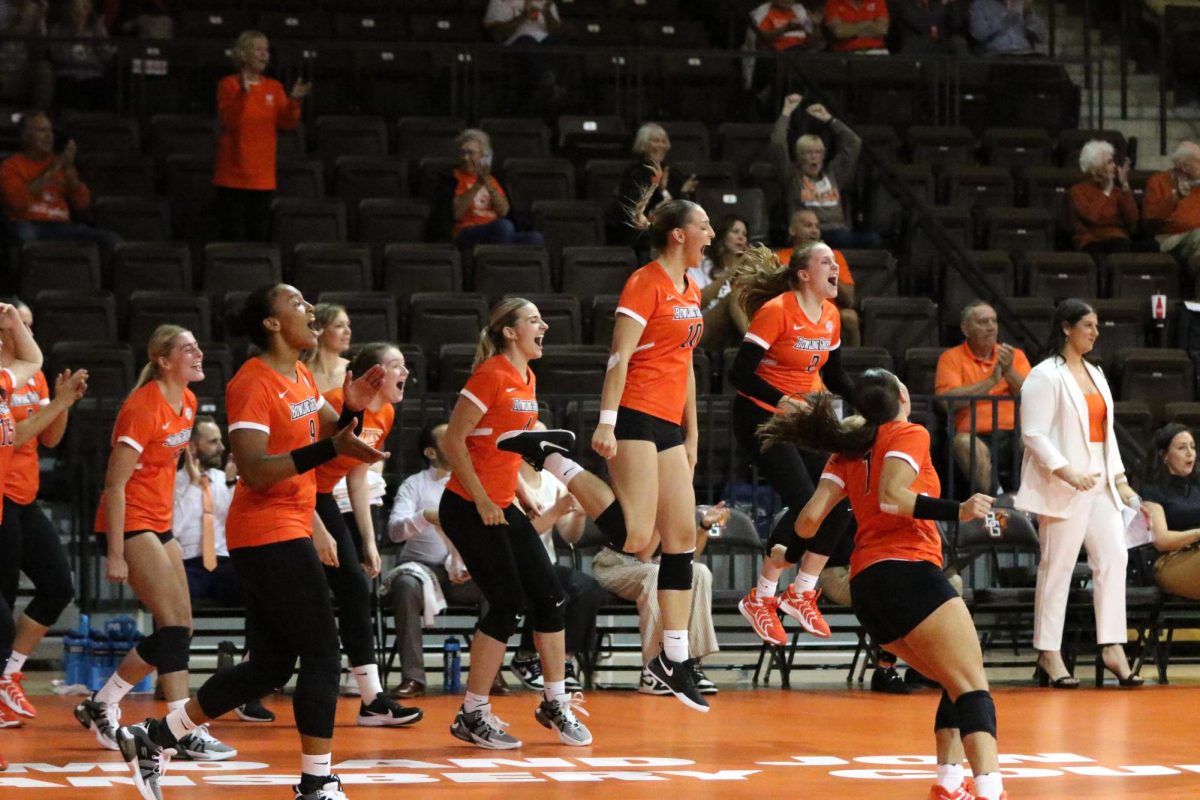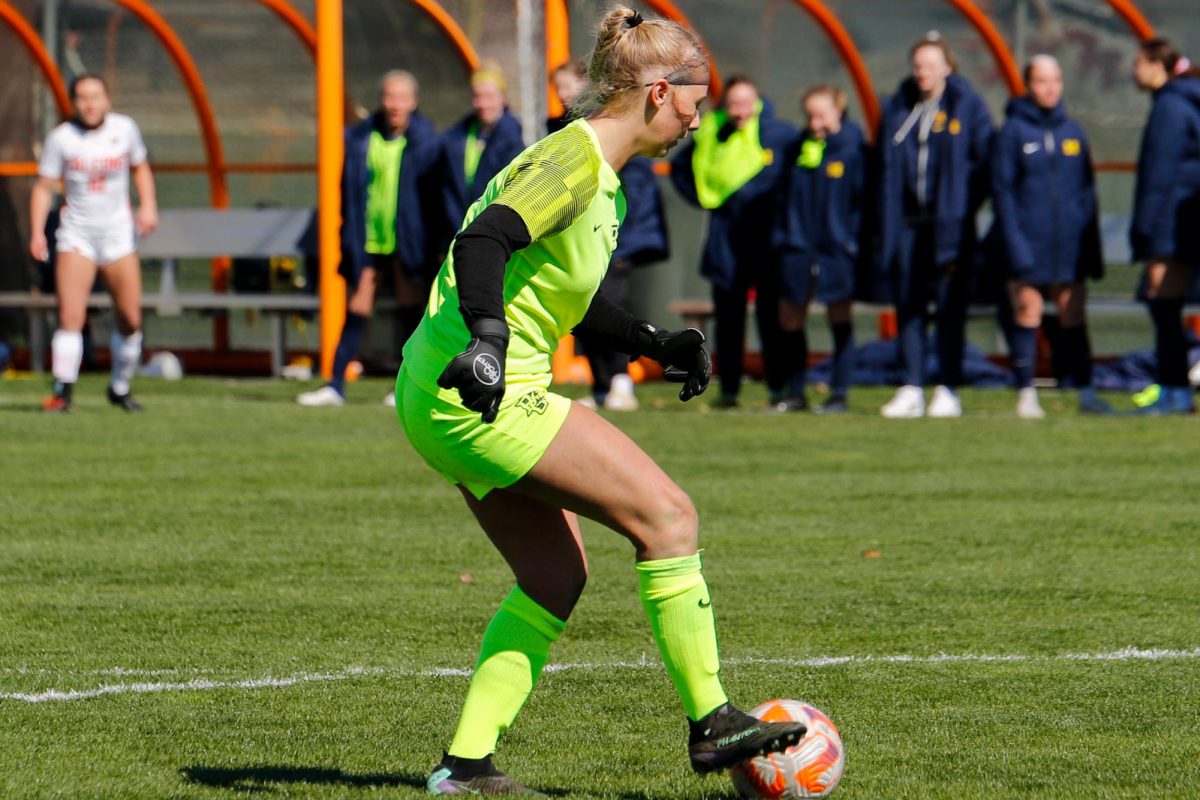Gwynne Dyer, an internationally acclaimed journalist, author, broadcaster, filmmaker, columnist and lecturer on international affairs, was welcomed by The Lamb Foundation Series this past week.
Dyer has published over one dozen books, has a twice-weekly column that is run in more than 20 countries, is currently working on a documentary on the sea level rise in the Northern Hemisphere and has a book titled “Intervention Earth” hitting shelves this spring.
At the event, Dyer spoke of the important work of the late James (Jim) Lovelock, who created the popular theory that the Earth is a system and we must treat it as such.
“Whatever you do, will influence the system, and we are a very large part of the system. We are major shifters of the atmosphere,” Dyer said.
According to Dyer and the work of Lovelock, 40% of our land worldwide is used for agriculture, another 30% is architectural structures such as buildings and roads.
Planet Maintenance Engineering is another area of work from Lovelock. Alongside his theory that the Earth is a system, he believed that there was a way to undo the damage we have been doing for the past 8,000 years.
“We had very little influence on the planet when we were simple hunter-gatherers. Then we began farming the land and raising cattle. We changed the methane in the atmosphere through cow burps,” Dyer said.
According to Dyer, the works of Lovelock, and many other scientists, the next glacial period has been canceled and has been for the past eight to nine thousand years.
In the 1970s the general public was very divided on climate change, global warming and if the next ice age would actually happen. By the mid-1980s, it was known that there was a major threat on the horizon.
“Don’t blame yourself too much for the plight we are in, we have not had long to reckon with it,” Dyer said.
Carbon Dioxide alongside methane and other greenhouse gasses are the collective culprits of the warming of our atmosphere.
“Those numbers do not come from flying around in airplanes nor is it about recycling stuff, burning coal is 60% of our emissions alone. You can’t change that,” Dyer said.
According to Dyer, the remaining of our emissions are 10% cement production, 10% steel production, 10% goods production and about 2% comes from air travel.
Breaking down the 10% from goods production further, 8% is methane from cows and sheep alone. These animals produce five times the amount of emissions as chickens and pigs because they produce methane as a part of their digestive process.
“I personally sense both here and in Europe a significant change in the sense of urgency in the past two or three years. The denial is in retreat and various things are taking us forward more rapidly than I expected,” Dyer said.
He also stated that we are not very well off because the proportion of energy to the total human energy consumption from fossil fuels, has only dropped from 87% to 82% over the last 30 years.
“New energy sources are coming online and all of that is very well, but the carbon dioxide-producing sources are expanding at the same rate,” Dyer said.
While we are dumping more than 44 billion tons of emissions into our atmosphere, Antarctica is not melting more than the traditional rate, however, you can watch glaciers melt in Iceland or Greenland.
In the northern hemisphere, the ocean has produced a deep warm current that goes by the front of the glacier, slides past the front of the glacier and makes it lose contact with the sea bed. This makes the glacier lose the friction that slows it down.
There are talks of installing panels in the ocean to stop the warm water from hitting and melting the glaciers to slow the speed that the oceans are rising at.
A large talking point for Dyer was the 2 degrees Celsius warming mark. Once the atmosphere warms over 2 degrees Celsius, the permafrost will begin to thaw and there will be irreversible damage to our planet.
Dyer also theorized that if we hit this 2 degrees Celsius, combined with the loss of fossil fuels, economies will fall, slavery would return and there would be global chronic war.
Planet Maintenance Engineers offer a glimmer of hope as there are a handful of pilot programs across the globe.
“We are on the verge of having Planetary Maintenance Engineers. They intervene directly with planetary systems to hold the heat down. It is a patch, not a permanent fix, while we get new emissions down and claw old ones back,” Dyer said.
With PME programs, there are three different ways that can remove emissions from the stratosphere, a non-active layer in our atmosphere.
The first of two proposed solar radiation management programs are to mimic what happens in the stratosphere when a large volcano erupts. When there are large volcanic eruptions, 17 million tons of dirt and sulfur dioxide gas are expelled into the stratosphere. When this occurs naturally, atmospheric temperatures are reduced by half a degree.
With this method, sulfur dioxide gas would be sent into the stratosphere where particles would sit for about two years. The particles would reflect incoming sunlight and would reduce temperatures at the surface.
The other option is only able to be done over the oceans as it is to artificially thicken the clouds with salt water so that the clouds are whiter, making them reflect more sunlight. This would also aid in reducing the temperatures at the surface.
The last way is already being piloted in four locations internationally. These plants are able to remove small amounts of carbon emissions from our atmosphere. This process allows these emissions to be transformed and keeps them out of the atmosphere.
“I would say to give us a little credit, it is a big universe, a mind-bogglingly big universe. Every star has an average of five planets around it and there is a trillion in this galaxy alone. Every emergent civilization that exists out there is bound to have a climate change crisis,” Dyer said.






